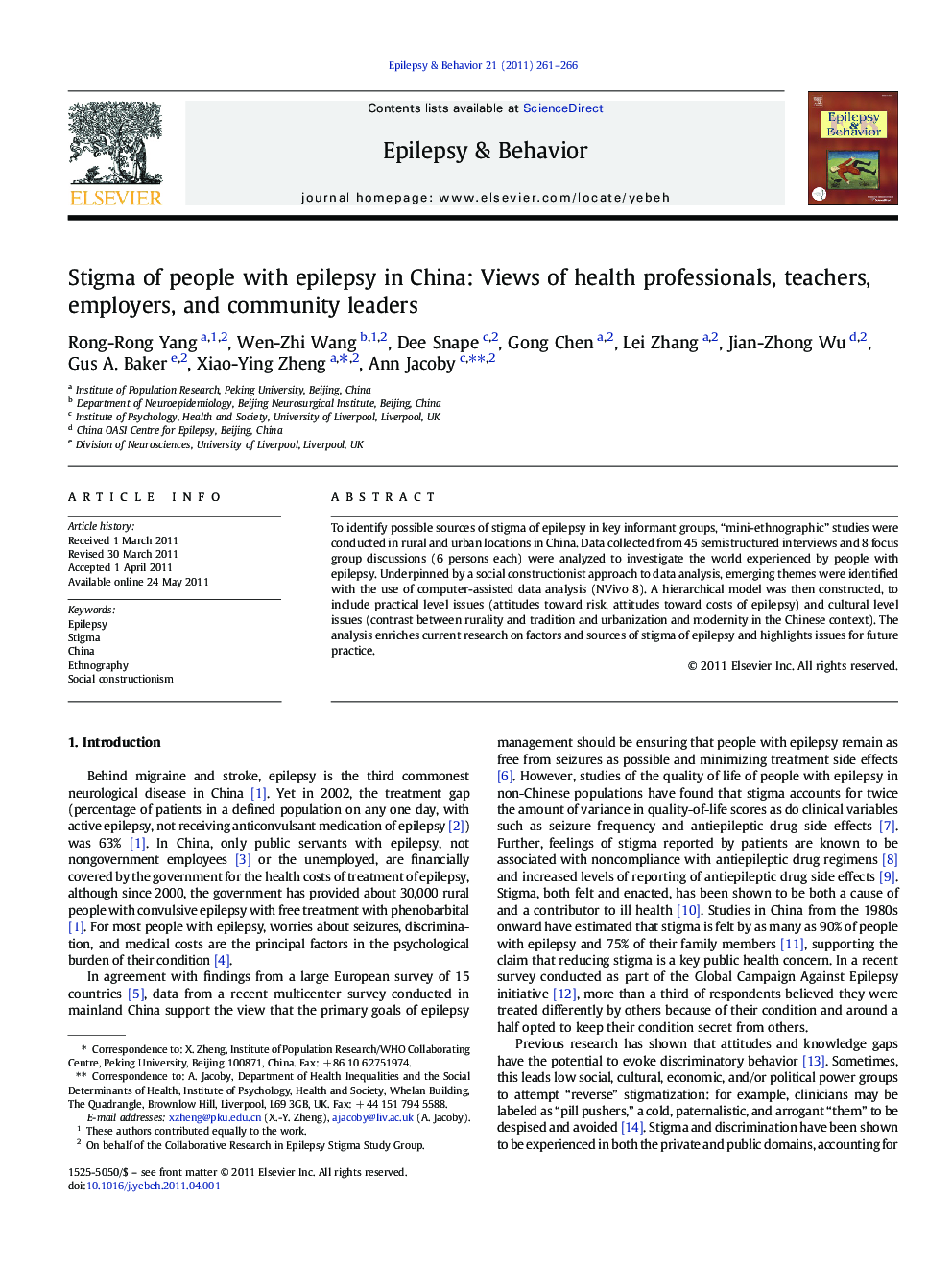| کد مقاله | کد نشریه | سال انتشار | مقاله انگلیسی | نسخه تمام متن |
|---|---|---|---|---|
| 3049898 | 1185933 | 2011 | 6 صفحه PDF | دانلود رایگان |

To identify possible sources of stigma of epilepsy in key informant groups, “mini-ethnographic” studies were conducted in rural and urban locations in China. Data collected from 45 semistructured interviews and 8 focus group discussions (6 persons each) were analyzed to investigate the world experienced by people with epilepsy. Underpinned by a social constructionist approach to data analysis, emerging themes were identified with the use of computer-assisted data analysis (NVivo 8). A hierarchical model was then constructed, to include practical level issues (attitudes toward risk, attitudes toward costs of epilepsy) and cultural level issues (contrast between rurality and tradition and urbanization and modernity in the Chinese context). The analysis enriches current research on factors and sources of stigma of epilepsy and highlights issues for future practice.
Research highlights
► The analysis enriches current research on factors and sources of stigma of epilepsy.
► Analysis yielded a hierarchical model of practical-level issues related to attitudes and cultural-level issues in China.
► Cultural-level exposed the contrast between rurality and tradition and urbanization and modernity in the Chinese context.
► Thematic analysis was applied with computer-assisted data analysis (NVivo 8) of "mini-ethnographic" data of China.
Journal: Epilepsy & Behavior - Volume 21, Issue 3, July 2011, Pages 261–266